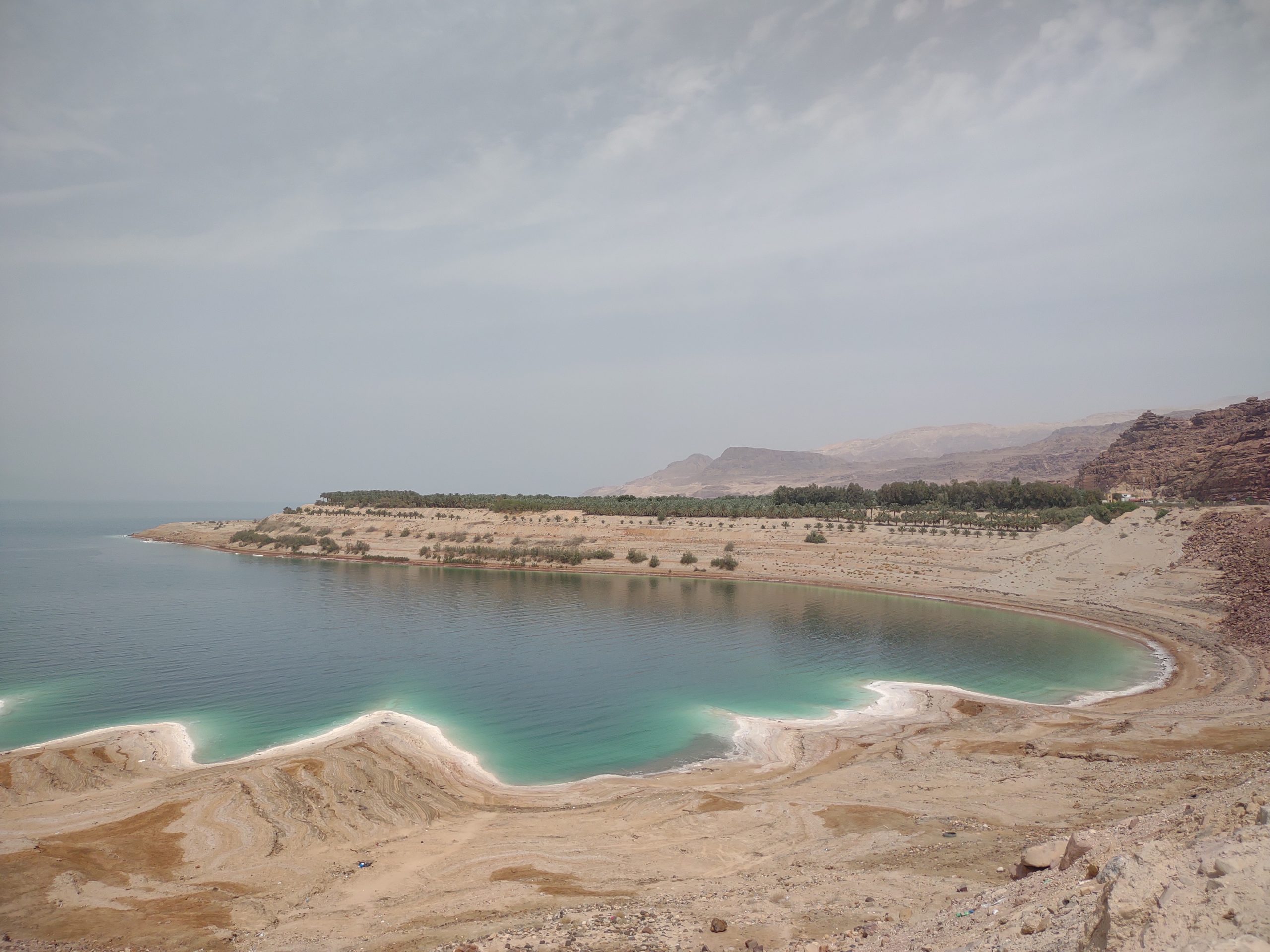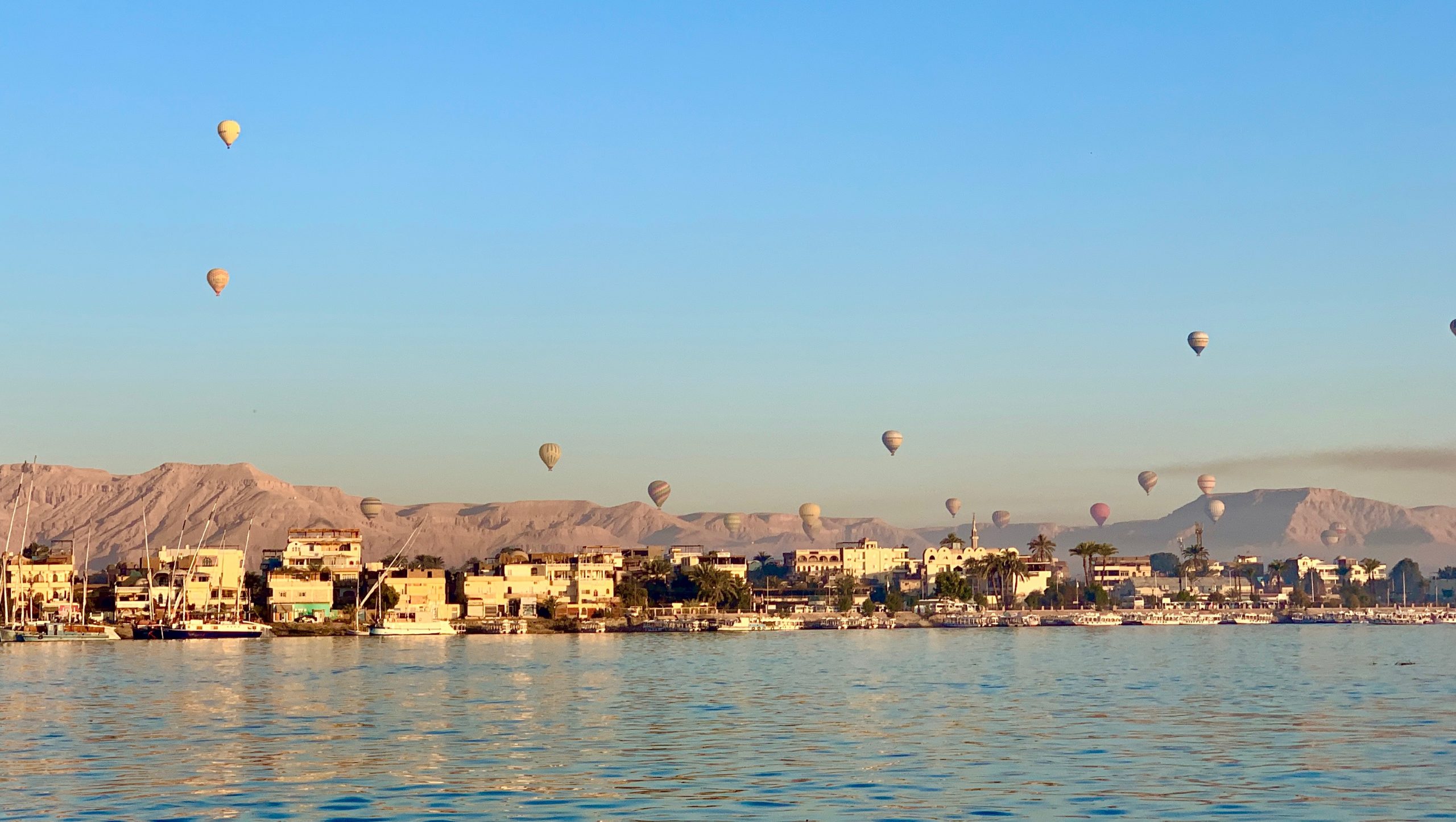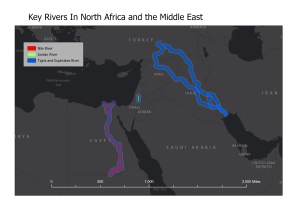22 North Africa & the Middle East: Physical Geography II –
Water in the Desert
“What makes the desert beautiful is that somewhere it hides a well.”
Antoine de Saint-Exupery, French writer and aviator

As much of NAME is desert, the human need for water in the region is heightened. Low population density is a clear consequence of limited access to water in the region. For human use, fresh water is required. The Dead Sea may provide resources, but as a hypersaline lake, it is not drinkable. In this chapter, let us consider sources of fresh water in NAME.
First of all, there are rivers. In fact, there are great rivers in NAME, though few overall. The Nile River is the world’s longest river, for generations serving as the life blood of Egypt. Over 90% of the Egyptian population lives in the Nile basin. Although rivers can prompt transboundary resource disputes, the riparian countries of the Nile River have managed to approve agreements for sharing the waters of the Nile, including a 2015 pact between Egypt, Sudan, and Ethiopia.
Similarly, the Jordan River, although quite short in length at only 156 miles, is a key waterway for Israel and Jordan, prompting agreements between these two countries, even though they disagree on many other issues.

The Tigris and Euphrates Rivers begin in the mountains of Turkey and exit in the Shatt al-Arab into the Persian Gulf. The Tigris passes directly from Turkey into Iraq, whereas the Euphrates intersects Syria on its way from Turkey to Iraq. At times there have been contentious circumstances regarding the flow and volume of these rivers, but the upstream country Turkey has maintained its advantageous control.
Turkey has additional rivers, but few of length are found elsewhere in North Africa and the Middle East. The Karun River runs nearly 600 miles in Iran. The Draa River stretches 680 miles in Morocco. In Algeria, the Chelif River manages only 450 miles.

Second, desalination brings fresh water to coastal countries that are otherwise deserts. Saudi Arabia is the world’s largest producer of desalinated water, while 70% of the world’s desalination plants are in the Middle East. The demand for water there is intense, so that it is worth a lot of energy to produce fresh water. Indeed, desalination is the most energy-costing means to create clean water. Desalination is increasing in North Africa as well; for instance, with construction in Morocco.

Third, the old-fashioned source of water in the desert is the oasis. A naturally formed oasis occurs when the underground flow of water is propelled to break the land’s surface. For instance, if an underground rock formation curves upwards and water in an aquifer flows atop that rock formation, water may be pushed toward the surface. Add scooping winds that erode a low spot on the surface and this may prompt water to breach through that low spot. Water then can pool in the location and constantly be replenished by the aquifer. Oases become locations for localized agriculture (dates, lemons, almonds, … ), settlement, and trade, as they are unique locations of water in the desert. The world’s largest oasis is the Al-Ahsa Oasis in east-central Saudi Arabia, spanning 33 square miles. Well known oases in North Africa include Awjila in Libya, Tata in Morocco, and Ouargla in Algeria.
Fourth, a qanat is a low-tech, ancient approach to gaining water from hilly areas. If an aquifer follows the trajectory of surface lands, then it also will rise as a hill rises from lower lands. In that case, a horizontal well may be dug in order to intersect the water table. If this is successful, then gravity will bring the water sideways from the hillside through the horizontal well. This is a traditional source of water in parts of NAME. The word qanat derives from the Arabic word meaning channel.
Fifth, there is extraction of deep water. In particular, the Libyan deep water project known as the Great Manmade River is recovering huge amounts of water from far below the surface. While much of the world’s water is in the hydrologic cycle, reaching the surface as rain and eventually evaporating back in the atmosphere, occasionally water is trapped underground. Geologic movement may shift rock formations locking water reserves in place. Such water reserves are called fossil waters. While searching for oil, Libya discovered that it holds vast reserves of fossil waters deep below the surface. These waters are in four major basins and are aged 7000 to 38,000 years. Using techniques similar to drilling for oil, Libya is pumping water to the surface, now providing 70% of the country’s freshwater. It is important to note that fossil waters are not replenished, as they are outside of the hydrologic cycle. Therefore, these waters someday may be fully depleted. Of course, this depends on levels of usage, leading estimated to vary wildly from 60 to 1000 years. Even with a price tag of $25 billion, the cost of the project is considered to be well less than the cost of desalination of the same quantity of water.
Sixth, water pipelines are possible. For instance, the rivers of Turkey supply more water than the country needs. Even considering the flows of the Tigris and Euphrates Rivers into Iraq, Turkey has enough other river flow to channel water into pipelines to bring water to desert lands of the Arabian Peninsula. Theoretically, this is feasible. It has been mentioned politically. Perhaps the engineering and political costs are too great.
Seventh, now let’s start dreaming. How else to bring water to the Middle East? Perhaps it’s only science fiction, but proposals have suggested towing icebergs from Antarctica to NAME. Definitely, this seems like a wild-eyed scheme. Does it have any chance of working? Could an iceberg be towed to desert lands? Well, icebergs float, so conceivably yes, with enough power, ships could pull icebergs. Obviously, some of an iceberg would melt as it moved through warmer climates and warmer waters. Would enough ice remain to be useful? It indeed somehow an iceberg was transported to a desert country of NAME, then how would it be utilized? All of these are problematic questions. Nevertheless, icebergs from Antarctica roughly average at least 100,000 tons, while the really large icebergs can weigh billions of tons.
Water in the desert. Priceless?
Exercises
Jordan is nearly landlocked. Its only coastline is sixteen miles along the Gulf of Aqaba on the Red Sea. Thus, Jordan’s recent solar energy for desalinized water deal with Israel utilizes Israel’s desalination industry.
Where does the salt go when seawater goes through the desalination process? Basically, some of the water becomes salt-free while the remainder of the water gains all the removed salt. Disposal of the brine or heavily salted water is problematic.
From a distance in the desert, a mirage may appear to be an oasis, but actually is an optical illusion caused by surface heating.
For an excellent video about qanats, go to https://www.youtube.com/watch?v=Ir8lc_yuDQ8&t=331s.
My Turn!
CITED AND ADDITIONAL BIBLIOGRAPHY:
“Background – Seawater Desalination in Israel.” Israel Ministry of Finance, September 11, 2020. https://www.gov.il/en/departments/general/project-water-desalination-background#:~:text=Today%20some%20585%20million%20m3,the%20Ashdod%20plant%20100%20million.
Barton, Alexandra. “Water In Crisis – Spotlight Middle East.” The Water Project, https://thewaterproject.org/water-crisis/water-in-crisis-middle-east#:~:text=Desalination%20plants%20are%20an%20overuse,Emirates%2C%20Kuwait%2C%20and%20Bahrain.&text=In%20addition%2C%20desalination%20is%20the%20most%20energy%2Dcosting%20water%20resource.
Bayyouck, Anthony. “Oasis Across the Middle East North Africa.” Arab America, December 20, 2021. https://www.arabamerica.com/oasis-across-the-middle-east-north-africa/.
Diaz, Shirley. Hot Air Balloons along the Nile River, Photo, 2022.
Knapp, Parker. Key Rivers in North Africa and the Middle East. College of DuPage GIS class. July 2022.
The Persian Qanat. https://www.youtube.com/watch?v=Ir8lc_yuDQ8.
Terry, Carrie. “Pros & Cons of Desalination Plants.” Sciencing, April 19, 2018. https://sciencing.com/pros-cons-of-desalination-plants-13425360.html.



